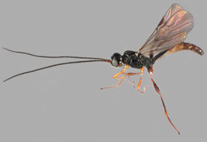Abstract
Coreinae, the largest subfamily of Coreidae, is distributed worldwide but is most abundant in the tropics. Cytogenetic data is available for 122 species, which include 40 from India. In the present paper, 7 species of Coreinae have been cytogenetically investigated for the first time for their diploid chromosome complement and for meiosis. Also, this is the first cytogenetic report for the genera Prionolomia and Petalocnemis. The modal diploid chromosome complement of the family Coreidae is 2n=21=18A+2m+X0. The present study on 7 species shows the diploid chromosome complement to vary from 15 to 27. Microchromosomes are present in 6 and absent only in 1 species. The sex determining mechanism is X0 in 5 and X1X20 in 2 species. The decrease in autosome number (14A) has been accompanied by 2 pairs of extremely large autosomes (Anoplocnemis binotata Distant and Cletus borealis Blöte) and the increase in autosome number (22A, 24A) has been accompanied by distinctly small autosomes (Petalocnemis obscura and Prionolomia sp.) in the complement. The behavior of chromosomes during meiosis is typical of Coreidae. Deviations wherever recorded are discussed. During diplotene, chiasmata are located terminally and there is a predominance of a single chiasma per bivalent. However, in Anoplocnemis binotata and Cletus borealis, one or both of the large bivalents show two terminal or subterminal chiasmata in diplotene. A regular arrangement of chromosomes is observed during both metaphase I and II: all the autosomes form a ring with microchromosomes lying inside and sex chromosomes lying outside the ring.

